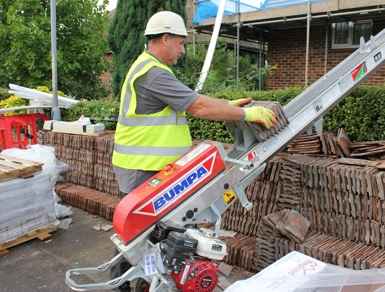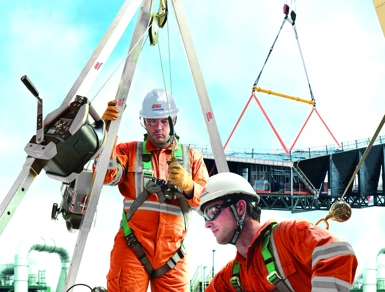What is LOLER?
Lifting Operations and Lifting Equipment Regulations 1998, otherwise known as LOLER, are regulations that “place duties on people and companies who own, operate or have control over lifting equipment.”
- Purpose: LOLER ensures all lifting equipment and operations are safe for those who use them and those affected by their use. It’s not just about the equipment, it’s also about how it’s used, who’s using it and under what condition.
- What Equipment Does LOLER Apply To? LOLER applies to any equipment used for lifting and lowering loads. This includes cranes, hoists, material lifts, and material accessories such as chains, slings, shackles and more.
- Key Responsibilities under LOLER:
- Thorough examinations should be conducted regularly by a competent person, typically every six months.
- Every lifting operation should be planned, installed and carried out under the supervision of a competent person to prevent accident or injury.
- All lifting equipment should be clearly marked with safe working loads (SWL).
- Up-to-date inspection and maintenance records must be available on request.
What is PUWER?
PUWER is the Provision and Use of Work Equipment Regulations 1998, applying to all work equipment, not just lifting gear. It’s designed to ensure equipment is safe, in good condition and used correctly.
- Purpose: PUWER focuses on ensuring any equipment is fit for purpose, properly maintained and used by competent people.
- What Equipment Does PUWER Apply To? PUWER applies to a variety of equipment including power tools, plant machinery, access platforms, hydraulic tools and more.
- Key Responsibilities under PUWER:
- Ensure equipment is suitable for its intended task and safe for use.
- Provide training for anyone using, supervising, or managing the equipment.
- Conduct regular inspections and preventive maintenance as needed.
- Fit appropriate safety measures like emergency stops or guards on moving parts.
LOLER vs PUWER – What’s the Difference?
Although LOLER and PUWER are often grouped together, they serve different purposes. Understanding the difference is important to ensure compliance when operating equipment.
- Applies specifically to lifting equipment and accessories.
- Focuses on safe lifting operations.
- Places duties on employers and those in control of lifting operations.
- Applies to all work equipment, not just lifting.
- Focuses on ensuring equipment is suitable, maintained and operated safely.
- Applies to employers, site managers and anyone providing or controlling access to equipment.
Where They Overlap
Lifting equipment must comply with both PUWER and LOLER. Think of PUWER as the wider regulation for all work equipment, with LOLER acting as the specialist set of rules for lifting.
Why LOLER & PUWER Matter When You Hire Equipment
Compliance with LOLER and PUWER isn’t just best practice, it’s a legal requirement for anyone hiring or using equipment. Both the hirer and user have responsibilities to ensure the equipment is safe, suitable and properly maintained. Failing to meet these regulations can lead to serious consequences including accident, injury, costly fines and enforcement action.
At GAP, every piece of equipment we supply is thoroughly inspected, maintained, and certified to meet current regulations. We give you peace of mind that safety and compliance are built in.
How GAP Keeps You Compliant
At GAP, we go beyond simply supplying equipment, we actively support your compliance with LOLER and PUWER. Our expert technical teams carry out in-house inspections, ensuring all lifting and work equipment meets the latest regulatory standards before it reaches your site.
LOLER and PUWER might sound complex, but with the right support, compliance is simple. By partnering with GAP, you can stay focused on getting the job done safely and efficiently.
Need advice on your responsibilities or choosing the right equipment? Contact our team for expert guidance on LOLER and PUWER, and the best solutions for your site.
Explore GAP’s full range of LOLER and PUWER-certified equipment here.




